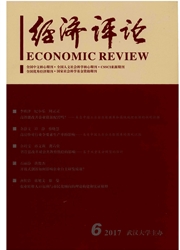

 中文摘要:
中文摘要:
本文利用1978-2010年国内省域面板数据,在使用单元调查评估法计算各省份DMU粮食生产污染排放量的基础上,利用方向性距离函数和序列DEA技术,测度了中国粮食生产是否考虑环境因素两种情形下的全要素生产率指数,并进一步分解为技术效率变化和技术进步。研究结果表明,是否考虑环境污染成本对于测算结果有较大影响,这对于政策导向意义重大;两种情形下全要素生产率增长贡献有限,主要靠技术进步单独贡献,并同时存在技术进步与效率损失并存的现象,粮食增长成本与代价相对高昂;从经济增长、资源与环境的协调程度来看,国内东中西部地区差异明显,东部地区表现最优的同时,西部地区的粮食生产扮演了"双重恶化"与失衡的角色。
 英文摘要:
英文摘要:
By applying directional distance function and sequential DEA, this paper uses the provincial panel data to calculate both traditional and environmental TFP growth of China' s grain,then decomposes them into technological progress and efficiency changes over the period from 1978 to 2010. The major conclusions are as follows :whether accounting the environmental factors has a significant impact on the calculation results; the contribution of traditional and environmental TFP growth are limited and their sources are technological progress individually, the effect of technical efficiency improving is relatively limited because of the lacking dynamic and continued deterioration of technical efficiency, and the cost of economic growth is high yet ; from the point in coordination degree of yield growth,resources and environment,the differences among regional TFP growth and its modes are significant,the eastern region is better than the other two, and the western region probably is in the situation of disequilibrium.
 同期刊论文项目
同期刊论文项目
 同项目期刊论文
同项目期刊论文
 期刊信息
期刊信息
